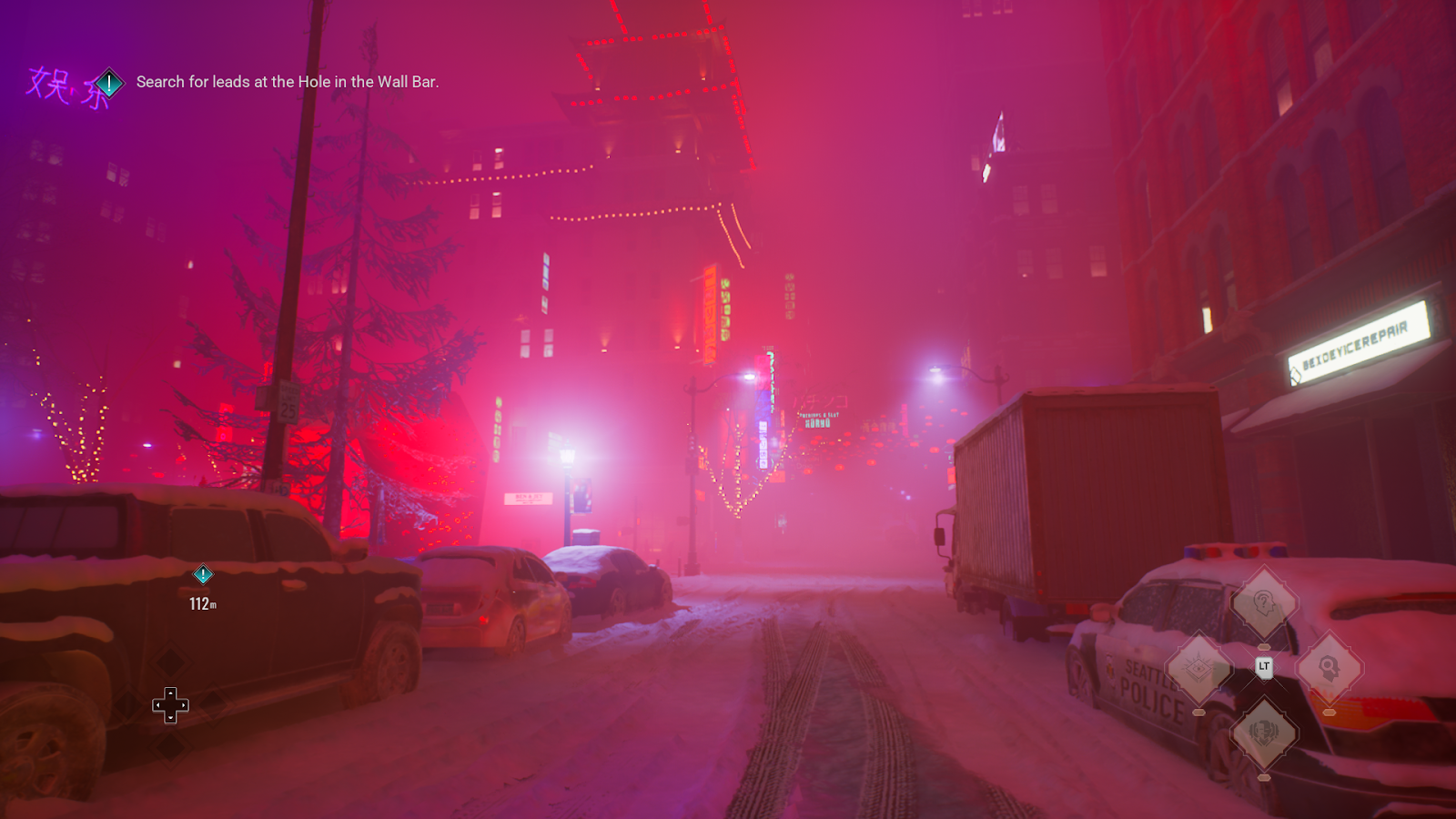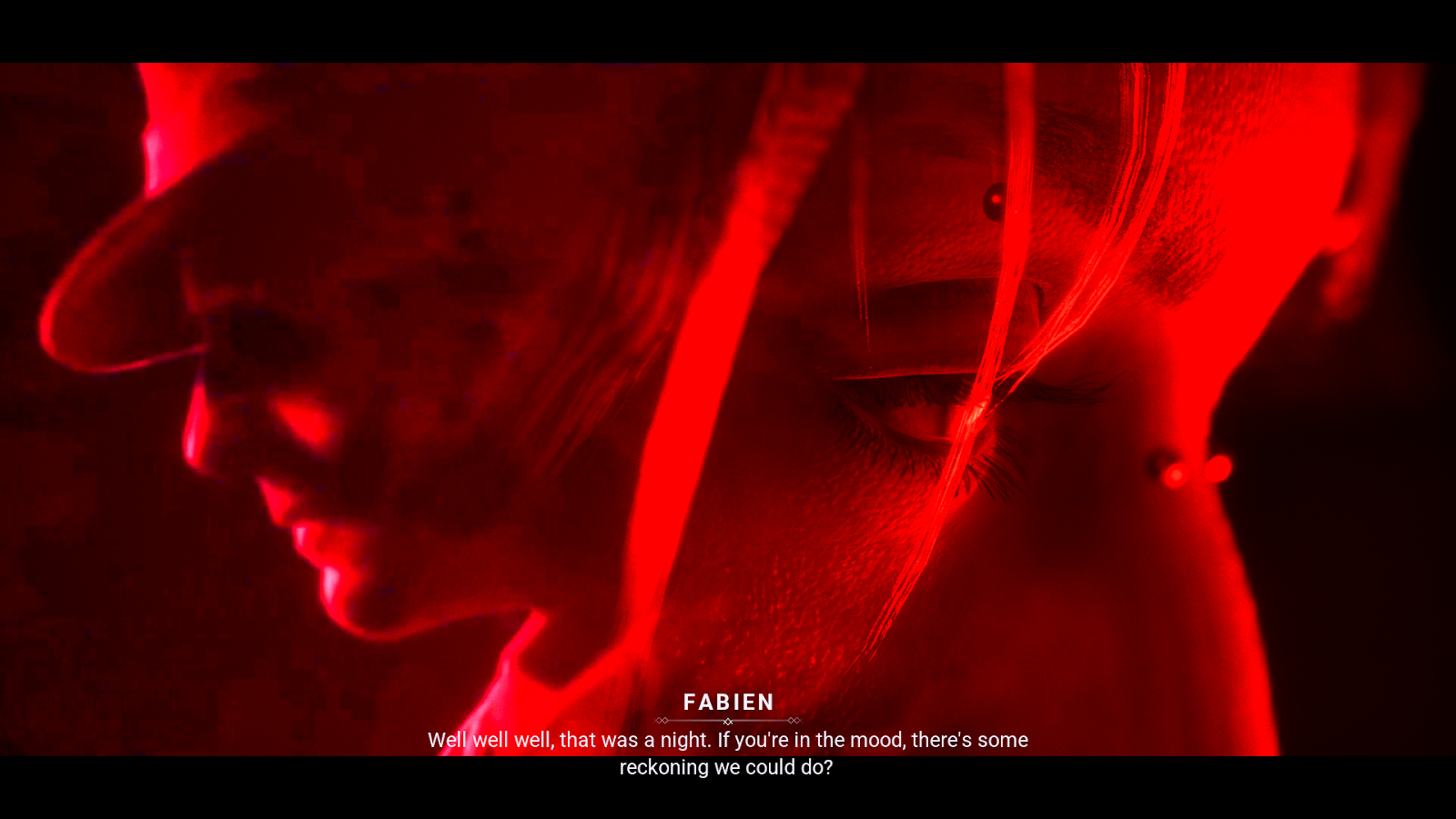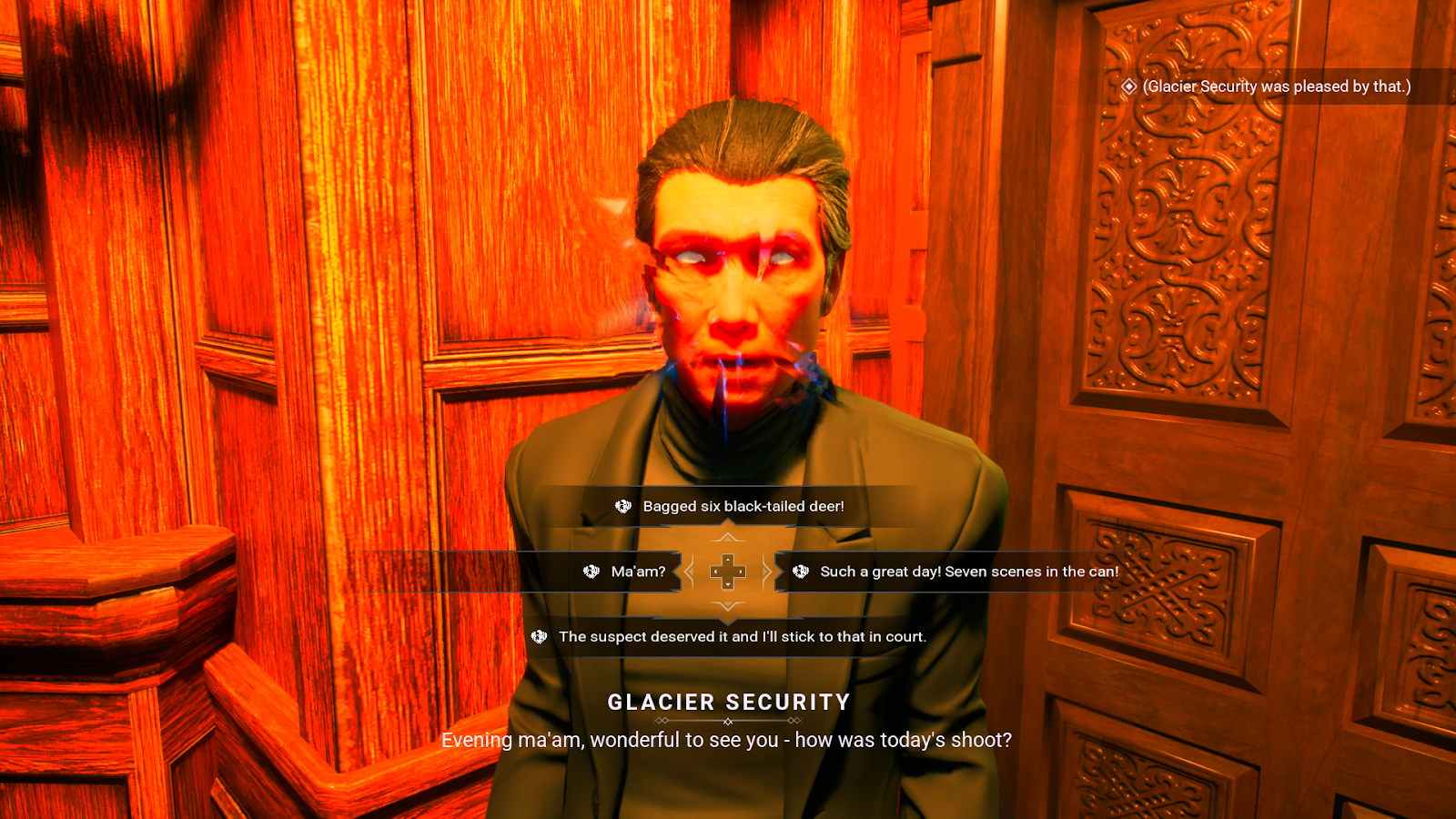The first time I saw Vampire: The Masquerade Bloodlines 2 in action was during a preview demonstration during the 2019 Game Developers Conference. I watched a member of the development team leap around the rooftops of Seattle and return to an apartment for a conversation with a grimy side character named Dale. The next time I saw that digital apartment was in 2025. It was mostly unchanged from how it looked back then, but the final product I was playing was one that had undergone a truly hellish development cycle.
Was this the same game? Was this truly the long-awaited sequel to the 2004 cult-classic I loved? Those felt like complicated questions to consider. As I grimaced and pushed my way through Bloodlines 2, the disappointments I felt—this was in many ways absolutely not a fitting successor game—gave way to a begrudging acceptance. This wasn’t what I expected, and it wasn’t what most fans wanted, but I am not sure if that even matters. There was something interesting happening here, and I thought that, perhaps, if I could sit and play the game that was actually in front of me, there might even be something good.
When we play a game, we’re arguably playing two games at once. The first is the thing on the screen—Kratos swinging his chain blades at a legion of monsters, our latest Assassin’s Creed protagonist leaping from the rafters upon unsuspecting targets—and the other is the game in our minds. The game in our minds is hazy and messily defined. It is the game we imagined when our best friend said “Bro, you need to play this.” It is the game we were told about in magazines. It is this latter game that I am trying to ignore as I play Bloodlines 2. The game I was promised in that dark hotel room demonstration in 2019 is not the game on my screen. But what is it?
The hard truth of Bloodlines 2 is that the most obvious answer to this question is that the game is a mess. It is a game whose troubled development (starting development with Hardsuit Labs before bleeding key writers and project leads and ultimately ending up finished by the team at The Chinese Room) is impossible to ignore. The final product was kitbashed together like a puzzle whose final image was made by smashing the wrong pieces into place such that they finally lock together anyway. Bloodlines 2 feels obviously wrong.
But it mostly feels wrong when the game in front of players is held up to the game they imagined, or the game they were promised. When trying to decide what a game is, a player or critic doesn’t just ask themselves “what is this game doing?” but also “what is it trying to do?” With Bloodlines 2, its title is a statement of intent: “We’re trying to be a sequel to the first game.”
In this, Bloodlines 2 largely fails. Vampire: The Masquerade Bloodlines was a messy game in its own right—the promising story gives way to a mostly linear and vaguely racist final act— but it generally functioned the way that you’d expect a roleplaying game to work. You created a character by choosing some initial stats and what mysterious vampire clan you belonged to and then were thrust into a moody mystery plot in what was, at the time, modern day California. The game world was peppered with various quests to accept, with outcomes depending on player choice. There were dialogue trees that you could navigate, sometimes using stats or your vampiric powers to affect the outcome of a conversation. You know, a roleplaying game!
Bloodlines 2 has minimal character creation. You choose a gender and your starting vampire clan, but this hardly has an impact on the game. There is a lack of stat management entirely and, at least for the main segments of the game, essentially no way for the way you navigate dialogue trees to change depending on your powers. There is a branching story, but the hub lacks meaningfully structured side quests; you can take some missions to kill rogue ghouls or deliver various packages around the city, but this is not a game world packed with interesting side quests with unique characters. It was so dull that after a point, I avoided doing anything but the main quest at all. If the goal was to make a comparable roleplaying game to the original Vampire: The Masquerade Bloodlines, this game is mostly a failure.

This sucks, and accepting the reality of the situation can be hard. For players eager to find something on par with the cult-classic they’re nostalgic for, it’s positively heartbreaking. If you’re looking for an in-depth roleplaying experience where your character customizations can drastically alter the outcome of quests, you’ll need to look elsewhere. The promise made by the Bloodlines 2’s title is a false one. It wants to be the guy but it ain’t that guy. And yet, in spite of the bluntness with which I report this to you all, I’m here to tell you that I am actually very happy I played this game. This might even be the most interesting game I’ve played all year.
The moment you move on from the question of “what was this trying to do?” and the disappointment it brings, you are immediately free to engage with the actual goddamn game. For all the letdown and limitations, I think there’s something here worth engaging with. It’s hardly revolutionary, but it is interesting, and in a games ecosystem defined by free-to-play attention grabbers and rote prestige formula fare, a middling seven out of ten game manages to feel downright refreshing. If you sit and play what’s here, removing it from a long lineage of hype and expectation, you might have a good time.
So what is Bloodlines 2 actually doing? Two things, and while neither feels entirely realized to their full potential, they mix together into a strangely compelling cocktail. I meant it when I said there’s two games here. You follow your customized character the Nomad, an Elder vampire waking up in modern day Seattle who finds themselves thrust into a new generation of vampiric politics. While there’s a snowy, moody nighttime hub to explore, the core experience is not one of diverging side quest chains and reactive dialogue. You don’t really roleplay, but do something closer to a feature-light immersive sim in the vein of the Dishonored series.
Once Bloodlines 2 pushes through the initial stage-setting and starts to drive you from one infiltration set piece to another—a construction site full of anarchic vampires, a nightclub packed with human sacrifices and the violent devotees of an egotistic artist—it starts to forge an identity other than “sequel to that game I like from over twenty years ago.” The powers you unlock for the Nomad are mostly bent towards combat and stealth exploration. You can mark targets with a blood curse and make them explode from the inside out, literally drag them into a shadow realm, hurl blood-forged daggers at them, or mark points to instantly teleport back to in the event you’re spotted in enemy territory. Mixing and matching these skills can create moments where you truly feel like the most dangerous undead son of a bitch in all of Seattle.
These various Dishonored-esque sequences are threaded together by a narrative that gets quite compelling if you surrender your initial disappointment. Warring vampiric nobles clash with both each other and with chaotic “Anarchs” for supremacy of Seattle, all while the sudden influx of vampire hunters into the city threatens to ignite a purge. The Nomad has been marked with a mysterious sigil and let loose into the city for purposes unknown. And oh yeah, there’s another vampire in your head too, a snub-nosed detective who shares your body.

From time to time, your perspective shifts to that of “Fabien,” the Malkavian vampire detective who somehow is riding shotgun in your body. He’s been in Seattle for centuries, and the emergence of a strange murderer hunting down the city’s vampires seems connected to a long unsolved case from the 1920s. At periodic moments of the story, you flashback to play through Fabien’s old cases.
These sections can vary from recent detective adventures to cases from a century ago, and it all plays out like a bloodier, more magical Raymond Chandler tale. Armed with powers unique to Fabien—the ability to force characters to see you as someone else, a power that allows you to talk to inanimate objects—suddenly there’s actual dialogue puzzles and more playfulness to the trees that you navigate. Let’s say there’s a club you need to enter to find your next clue, but the bouncer won’t let you in. Muddling his mind so that he perceives you as someone else is a fun course of action, but when you use this power, there’s no sense of who he sees you to be. “How was today’s shoot?” he might ask, and you need to figure out what he means. Does he think you’re a movie star? A politician shooting a commercial? A hunter?

These dialogue puzzles are ultimately more linear than their first impression. There’s not really any penalty for navigating the options incorrectly; you can always try again if you fail. But they fit the character while offering a playfulness that the Nomad’s initial dialogue trees lack. Need to get some files from the evidence drawer in the police department? Well, you can’t just open it. You need to use your powers to talk to it and coax out permission to browse the station’s reports. These sections tease of a more functional roleplay experience, and while returning to the Nomad can be frustrating after this, the ways in which Fabien’s old investigations mix with the Nomad’s ongoing foray into Seattle’s bloody politics is enthralling.
Fabien’s sections are a highlight, but as Bloodlines 2 progresses and moves away from its mediocre starting hours, there’s a lot to like. You might infiltrate a vampire hunter operation at the docks as the Nomad, culminating in a BioWare choice about whether to turn their leader into your own vampiric thrall. These moments aren’t many but can drastically alter Bloodlines 2’s ending. In another moment, you’ll flash to Fabien’s early life as an investigator in the Roaring Twenties or guide him through a more modern investigation that culminates with him having a conversation with a dying iPhone. Don’t die on me! Not before you tell me who the killer is!
None of this ever feels as cohesive as the first game, and the experience is not as replayable or customizable, but there’s a fun story here for the taking. But you’re only going to find it if you’re devoted to answering that ever-important question: “Okay, what is this game actually doing?”
I want to be clear here that I’m not saying Bloodlines 2 gets better and that you “just need to play ten hours to get there, man.” I’m saying that this experience is there essentially from the start if you want to engage with it. This is true of all games, and all it really takes is a willingness to discard certain assumptions about what you want or what a game needs to be. Yes, Bloodlines 2 doesn’t live up to the implicit promise of its title, or to the expectations many players might have for it, but that doesn’t mean there’s nothing there.
I’m not saying people should push through the game if they aren’t enjoying it. That’s a matter of economics–is this thing worth the money I’ve paid for it, and am I willing to push forward beyond my initial impression? It’s a bit crass of a calculus, but one that I can accept. But I think that if you are able to put yourself aside, shifting your tastes and desires and embracing an honest assessment of what’s before you—be it a game or film or anything else—there’s usually artistry to enjoy. Most art, even the worst of it, holds some beauty when viewed at the right angle.
It is possible to bring too much of ourselves to an experience, to insist too heavily on our own biases when we play a game. As a games critic, like others charged with playing a game professionally, it is important to develop the particular skill of keeping your finger off the scale when you’re examining a game. To play a game in this way means engaging in a conversation with the work and by extension the people who make it. Like any conversation, it is possible to turn the subject too insistent on yourself, your feelings, or your desires. As a writer, I eventually have to speak before an audience, but there’s a portion of a critic’s work that must involve active listening. This only happens if you don’t hog the conversation.
I was gripped with deep frustration when I started Bloodlines 2. Pushing that frustration aside, accepting that what I wanted was not what was there, allowed me to see what actually was. It’s a mess of a game, but within the chaos is an exciting story that I’m going to be thinking about even after I’m done writing this. Whatever next game comes along that frustrates me—even if it pisses me off—will receive the same courtesy. In return, I will receive the opportunity to have fun and perhaps even grow a little bit as a person.
I just need to honestly ask “what’s happening here?”


